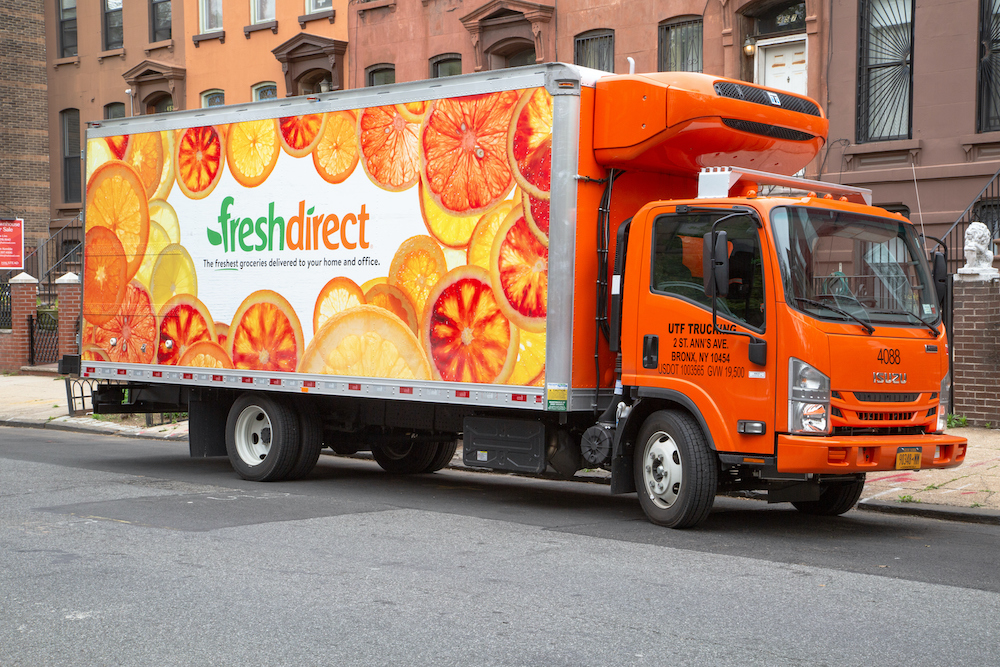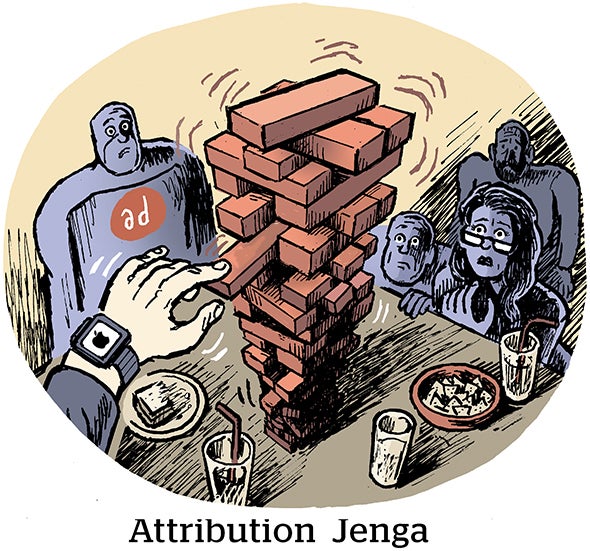
For New York City-based consumers familiar with the FreshDirect brand, its orange and green delivery trucks may come to mind first. But the 20-year-old company wants to be known as a high-quality food and grocery retailer first—and a delivery service second. “We’re intimately knowledgeable about fresh food, curated experiences and culinary experiences,” CMO John MacDonald told Chief Marketer. “We just happen to think that the best way for that food to get to you is for us to deliver it.”
So to help tell that story, and to overcome the perception that “all food delivery is equal,” the company created a video series, dubbed “Sourced,” that highlights the stories, passions and motivations of the farmers and producers with whom FreshDirectpartners. We spoke with MacDonald about marketing the video campaign, brand awareness goals, the unique challenges of direct-to-consumer marketing and the company’s omnichannel approach.
Chief Marketer: Why did you decide to leverage vendor partners for this marketing campaign?
John MacDonald, CMO of FreshDirect: Spotlighting partners is something that many companies, specifically in food and grocery, do a lot. They showcase the relationships that process the quality of product. What I wanted to do with this one was turn the prism a little bit and show a different side as to why partnerships matter, especially for us. We show the quality of the food and we talk about the direct producer-to-table ecosystem we’ve built, but more importantly, the passion and reasons why these suppliers do what they do.
CM: How are you getting this message out to people? What’s your target audience?
JM: We created these as evergreens. These are partners who we’ve used for several years in many cases, so we’re promoting them on paid and organic social. We’re putting them on YouTube. We’re promoting them in pre-roll when people watch YouTube. We also have the ability to cut them down and do other things with them. We’ve taken this footage and given it back to them, to the farms and our suppliers as well. We’re hoping that they go back and start using it. They can use the still photography. We’re trying to get this in front of as many people as possible, but we’re also keeping it out there for a long time, so that if people happen to come to our site or our YouTube page they can see it.
CM: What are the campaign’s strategic marketing goals? And the KPIs you’re trying to meet?
JM: Very standard things, like engagement on my social channels and getting likes and views, but I wanted to go back and start telling the story of FreshDirect a little bit more than we have in the past, not just the fact that we’re out there and we’re packing groceries and fresh food and giving it to people. I’d love to start making headway on some brand breakthrough. I want some top-of-mind awareness and top-of-mind consideration. I want this to help people have a better perception of the kind of quality that we engage in, and engage with the brand not in just a functional way, but in an emotional way, and understanding what we do [beyond] delivering groceries.
CM: What are some of the marketing challenges of the grocery delivery landscape?
JM: The first thing I’d say is that FreshDirect isn’t a delivery service. We’re a high-quality food and grocery retailer first. We’re intimately knowledgeable about fresh food and curated and culinary experiences. We just happen to think that the best way for that food to get to you is for us to deliver it. We have temperature-controlled facilities and trucks that deliver the food in the best possible condition. I think the biggest challenge for me as a marketer for FreshDirect is to get customers to understand that, and to understand that not all food delivery is equal. And the relationship on how your food is stored and transported and how long it lasts at your home matters.
CM: What’s your social media strategy for this?
JM: We’ve done some research and we know that there are some awareness problems outside of Manhattan, specifically in the outer boroughs and the suburbs. So we’re using not only the social channels, but other mass media channels to reeducate people and broaden our reach. Social channels are going to be a mix of re-introductions to the customer and telling those great stories about our suppliers through the Sourced videos.
CM: Beyond this campaign, what channels and tactics have proven successful for your brand?
JM: I think anybody who is in our space understands that it’s a mix of the channels. Even though we’re an online, pure-play grocer, you still need to make sure that you’re reaching the customers where they are. And so that means a mix of digital and traditional. Things that work well for us digitally are paid search affiliate programs and very targeted, personalized, communications with our existing customers. But we broadly reach people, too. We still engage in very traditional methods, like direct mail, and this fall, we actually are doing our first broadcast TV [spot] for the New York Metro market. We’re doing a very wide media buy and going out there to try to tell that story and engage with the customer.
CM: Can you talk about your direct mail approach? Being New York City-based, I’ve noticed that your discount coupons have been around for years. How is that working for you?
JM: We use direct mail for a whole bunch of different reasons, and some of them are pure acquisition. We’ll go out there and say, this a group of people in the New York Metro market that we’ve never talked to before and we can target them. Sometimes we know customers who have shopped with us in the past, and some haven’t shopped with us before. So we’ll do some win-backs through those offers.
Acquisition is actually a success story for us through direct mail, because it introduces the brand and gives something people tangible to hold on to. And it also gives them a really good incentive to come into the brand and to shop with us. We still see value out of direct mail. But I think it’s in tandem with the other touchpoints. I’m encouraged to see that people still respond to that because you get bombarded every day with emails and texts. And sometimes it’s nice just to come home, have that piece of mail and sit with it for a little bit, or put it off to the side and then come back to it later, whereas an email or a text is deleted immediately. We see a longer-tail value to some of that direct mail.
But I think that’s the value of a fuller, broader type of funnel approach, where you may be sitting with a direct mail piece and maybe put it off to the side. But then you see our commercial and might go back to it. We want to continue to build that relationship, more than just, “Hey, I’m going to give you $50 off,” and it’s a performance marketing piece. We’re trying to find those areas of life where we can intersect with the customer.
CM: What are the challenges and opportunities of the direct-to-consumer market?
JM: Consumers in this world want us to solve their problem. [We have to] meet their expectations, meet them where they are, and consistently get them what they need–and then surprise them and give them quality. In a direct-to-consumer business, you have to deliver what you promise. We have to get the food to them on time, when they want it, in the condition that they want it in. That’s the bare basics of it.
The second thing is they want to know that you’re a brand that they can associate with this. There’s an aspirational element with brands like us, so we have to fulfill that. So if they’re looking for “grocery treasures”–these are finds that people can’t get too many places–we can get them those things. The challenge is making sure that we’re top of mind and that we are in their consideration set. I’ve got to be relevant to their life. I’ve got to solve their problems. And I’ve got to surprise them.





